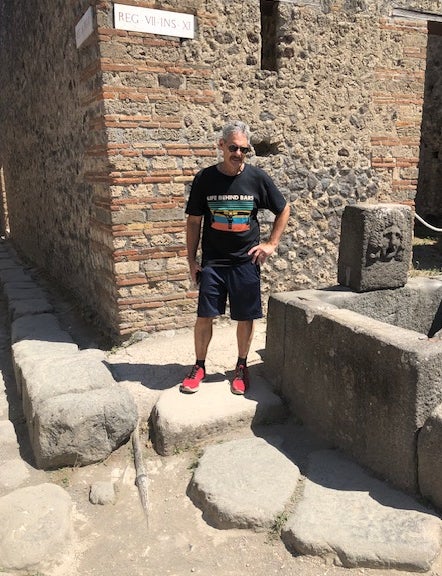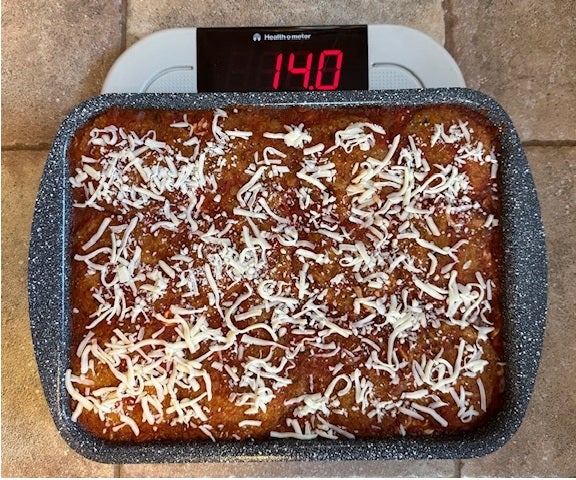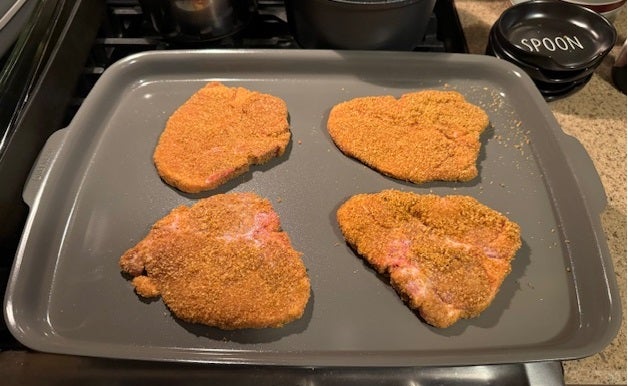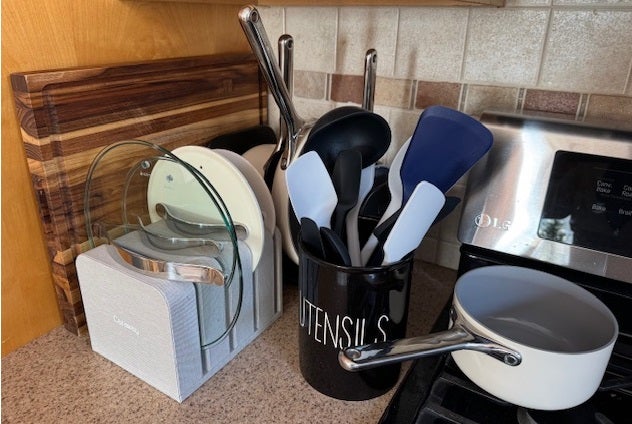Don't You Know That You're Toxic?
The Romans had an abundance of lead, a soft and malleable metal they used it to make everything from plumbing pipes to cookware, utensils, containers, and tools. As brilliant as their engineers, builders, and artisans were, they had no idea lead was toxic.
When I entered the plumbing trade in 1981, many water mains in Massachusetts were made of lead, as were portions of drainage piping, solder, brass fittings, and plumbing fixtures.
When I asked my father-in-law, the first Master Plumber I apprenticed under, why a known toxin like lead, was used in plumbing, especially water supply, he responded, "Once water travels through a lead pipe, a white film forms on the inside and the water never makes direct contact with the lead…"
He and all the other plumbers of his generation (he'd be 107 today) had been bamboozled. Lead was a known toxin, even back then, but there wasn't enough money in anyone's budget to change the piping, so no one talked about it.
In 1986, Congress amended the Safe Drinking Water Act to "prohibit the use of pipes, solder or flux that were not “lead-free” in public water systems or plumbing in facilities providing water for human consumption." It meant a complete retooling, but manufacturers had no choice but to comply.
In the years that followed, lead water mains were slowly being dug up and replaced with copper and lead solder was replaced with lead-free solder. As a plumber then, I didn't enjoy working with the first generation of lead-free solder, which consisted of tin and antimony and required high heat to melt. Since then, better lead-free solders have been developed with lower melting points. (Who solders pipe anymore anyway?)
In 2019, my wife and I traveled to Italy, and our first stop was Rome. Although the lead water pipes no longer work, many are still intact, like the one in this picture of me in Pompeii.

When I was a kid, my parents cooked with aluminum pots and pans. They were cheap and dented easily. Later, when they could afford to, they bought stainless steel pots and pans, some with copper bottoms.
Then, in the early '60s, Teflon-coated pots and pans were introduced to the general public, becoming an instant sensation and all the rage. TV ads on every channel boasted of the breakthrough material, which had actually been invented in 1938 and trademarked in 1946.
Everyone went bonkers. Teflon-coated pots and pans were less expensive than stainless steel, and eggs slid right off the pans without sticking. Everything did. Teflon exploded, and no one was concerned about toxins, much like the Romans and lead during the period known as Classical Antiquity…
My wife and I have always used Teflon fry pans and had no reason to stop until recent studies showed Teflon released "Forever Toxins" into the air during high heat, and when Teflon-coated pots and pans start to break down and deteriorate, people ingest the toxins in their food. That got my attention…
In 2014, the United States officially banned Teflon products containing Perfluorooctanoic Acid (PFOA), a synthetic chemical that's part of the perfluorinated alkylated substances (PFAS) group that has been linked to cancer in experimental animals and could be at least partially responsible for the cancer epidemic in humans.
Enter Non-Toxic, non-stick cookware, and non-toxic, medical-grade nylon cooking utensils. A marketing ploy? No. There's plenty of hard evidence to support forever toxins in Teflon, and the more studies I read, the more convinced I became. I continued my internet search and discovered forever toxins created by Teflon is a real thing and a serious health hazzard. I wanted to rid my house of the toxic cookware we'd been using for years, albeit too late for us. My wife and I have both been diagnosed with cancer already.

Advertisement
When I became a caregiver for my wife, in addition to performing advanced medical procedures at home, I'm also responsible for cooking, cleaning, shopping, paying bills, and doing laundry. Things I'd conveniently avoided the first 40 years of our marriage.
One of the first things I noticed after spending time in the kitchen, cooking and washing pots and pans, was the deterioration of our older Teflon-coated fry pans.
I wanted to buy new cookware and utensils from established companies, ones experienced with non-stick, toxin-free, ceramic-coated products. I didn't want to get suckered in by the many "flash in the pan" startups looking to cash in on the toxic fear.
I spent weeks researching and reading comments about different manufacturers, and the ones that had the most positive comments were Caraway and GreenPan, both producing non-stick cookware with ceramic coating that's PTFE/PFOA-Free. For utensils, I liked GIR, which is made from hospital-grade, non-toxic nylon that can withstand high temperatures. I also liked the DaTerra non-stick lasagna pan made in Italy, which is also PTFE/PFOA-Free and a bit deeper than most in that category.
I trashed my plastic cutting board, too. It was all cut up and worn and old enough that I was sure it wasn't toxin-free. I started looking into wood cutting boards.
I began selling off my baseball glove collection and other things I collected over the years to justify the expense of retooling our kitchen. Each glove or collectible I sold and shipped meant I could buy more toxin-free cookware and kitchen accessories. Funny how priorities change…
I fell in love with Caraway products and went shopping for deals on eBay. Then Caraway ran their big Black Friday sale early, as did GreenPan, GIR, and DaTerra.
I spent my money wisely. I bought two Caraway pots and two fry pans with a mix of metal and glass lids and a slick-looking lid holder. I also bought a Bobby Flay saute' pan because it was a lot cheaper than Caraway's. I'm a big fan of "Beat Bobby Flay", and I always root for Bobby. I bought a bunch of GIR nylon utensils and a set of oven pans from GreenPan. I bought the lasagna pan from DaTerra on sale on Amazon, and I decided on a teak cutting board made by Sonder LA, a family-owned business also sold on Amazon. Everything was heavily discounted.
Recently, after GIR ran out of certain items, I bought a few more non-toxic nylon utensils from GreenPan.
My first time using the DeTerra lasagna pan was making a 14 lb. eggplant parmesan for my wife, two of her friends, and my son Dylan and his wife Lexi. I love the smooth interior and built-in handles. It's lightweight, and the non-stick, non-toxic ceramic coating makes cleanup easy.

GreenPan's non-stick, non-toxic oven pans are great, and when purchased as a set during a sale, they're very affordable. Nothing sticks to them; it's an easy cleanup, and I love the built-in handles. No rivet heads to catch food. It was like these pork chops were skating on ice, and cleanup was a breeze!


Advertisement
I couldn't be happier with the Caraway pots and fry pans. They're a work of non-stick, non-toxic art, but you pay for it. The packaging is incredible, and their products are at the top of their class. If I had the mullah, I'd fill my entire kitchen with Caraway!
I was a little disappointed in the saute' pan made by GreenPan for Bobby Flay. When I first used it, I put oil in the middle, and it immediately ran to the sides. It's a lot lighter than the Caraway pans, and had me wishing I spent a little more and bought the Caraway. Not that the Bobby Flay doesn't work. It's just not the same quality as Caraway. I came away thinking that buying signature cookware isn't always a good idea. It's best to stick with trusted brands without chef's endorsements.
The GIR utensils are tremendous and necessary when working with most modern non-stick pans because they don't scratch them like metal utensils tend to do. The edges of their spatulas are soft, like a squeegee. They work incredibly well scraping the bottom of anything, but they're not firm enough to get under some heavier food items. Overall, I'm very happy with them.
The Sonder LA teak cutting board is a work of art. It arrived in a well-padded box, and once I cleaned it up and had it on the counter, I hesitated to put a knife on it. It was so beautiful. Once I started using it, I realized how useful it was and that there were no more toxins from the plastic cutting board we had used for years.
It's a small kitchen, but I found a place for all our new cookware and utensils. Check out the Caraway pots and pans

I haven't used the GreenPan utensils yet, but they look great. They're more expensive than GIR but also reinforced with metal. Their shipping is slow, and their packaging is not up to its competition. They tossed an unwrapped oversized spoon into the cardboard box along with the other four utensils, which were all wrapped in plastic with one open end. The last person to touch the spoon was in shipping, not packaging, where they most likely wear gloves or machines do the work. They're selling healthy living through non-toxic products, so GreenPan should start packaging everything in sealed plastic like their competitors do. (Yes, I'm a germophobe!)
In the end, my recommendation is to trash all your older pots and pans, especially the toxic Teflon-coated ones, and find some non-stick, non-toxic, ceramic-coated replacements made by a reputable manufacturer. There are plenty out there. And don't forget the medical-grade nylon utensils to protect your investment!
It's never too late to live healthy and say no to toxins! (You don't want to end up like the Romans…)
